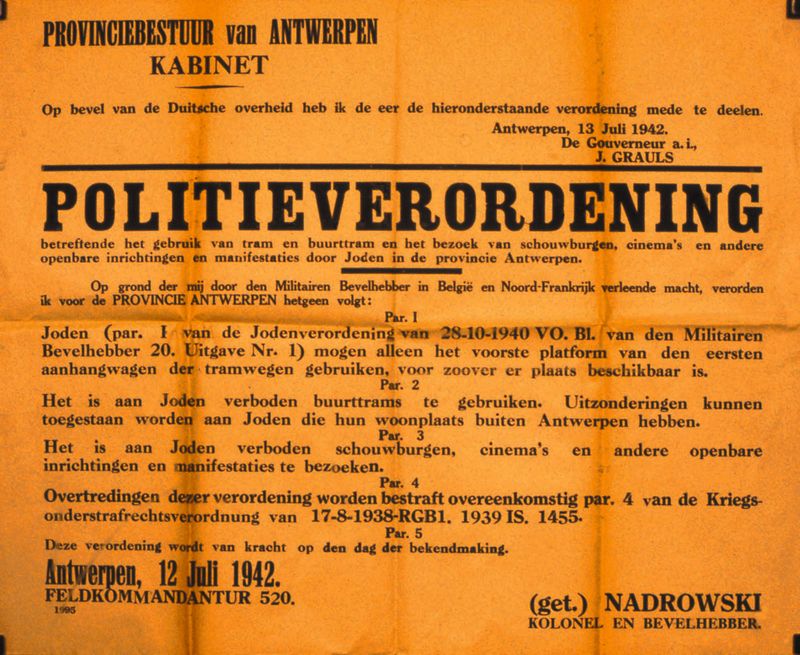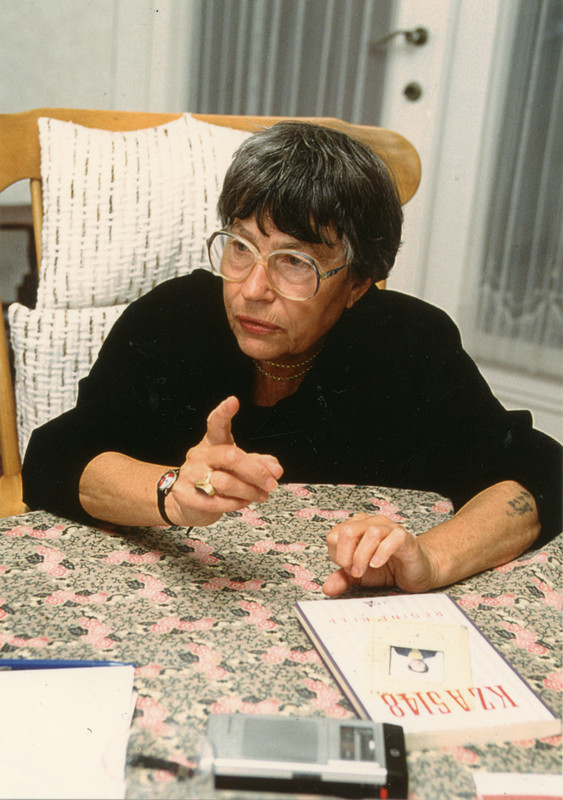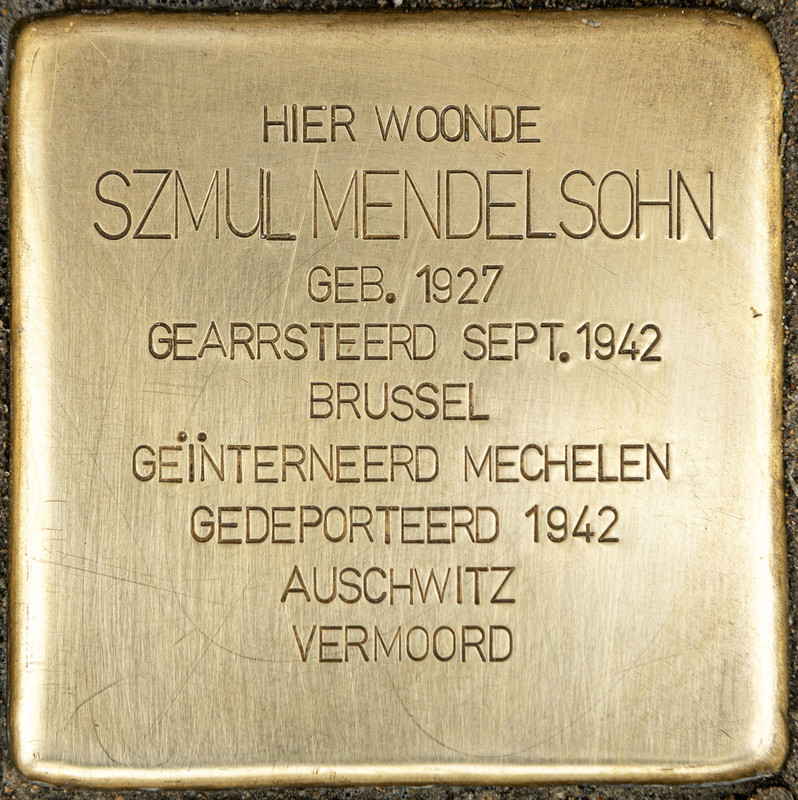
The arrival of Jews previously summoned in the courtyard of the Dossin barracks, 27 July 1942 | Mechelen, Kazerne Dossin
The Dossin Barracks
The Persecution of the Jews during the Second World War
In 1942 in the occupied territories the Nazis started on the deportation of Jews to extermination centres in the Third Reich. In Belgium they used the Dossin barracks in Mechelen as an assembly camp. More than 25,000 men, women and children waited for their deportation there. Almost two-thirds were murdered in gas chambers on their arrival in Auschwitz-Birkenau. The others were conscripted for slave labour. Only 1395 people survived that horror.
Before the war a Belgian garrison was stationed in the Dossin barracks. Starting in July 1942 the German occupying power turned it into an assembly camp for Jews, Roma and Sinti. The camp staff consisted of about ten German and about 40 Flemish SS troops. The food provision and hygienic conditions were appalling. Brutality was commonplace. Between August 1942 and July 1944 28 train transports left from the Dossin barracks for Auschwitz-Birkenau.
Little attention was paid immediately after the war to the persecution of the Jews. The building again became a Belgian army barracks and in the 1980s apartments were built. Since 1995 a museum has been established there, which in 2012 was expanded to ‘Dossin Barracks Memorial, Museum and Research Centre on the Holocaust and Human Rights’.

Mechelen, Kazerne Dossin
After a showing of the German propaganda film Der ewige Jude (The Eternal Jew) on 14 April 1941 a rabid mob surged through the streets of Antwerp and destroyed Jewish shops, houses and synagogues.
The Persecution of the Jews during the Second World War
During the Second World War the Nazis imposed their anti-Jewish ideology in the occupied territories, including Belgium. The persecution of the Jews was carried out systematically. It was a step-by-step process of identification, registration, stigmatisation, exclusion, deportation and murder.
In the autumn of 1940 the occupiers produced a definition of the concept ‘Jew’. All Jews over the age of 15 must be enrolled in a Jewish register. Subsequently the occupier announced stricter and stricter measures, with the aim of excluding Jews from social life. They could no longer hold public positions and they were no longer allowed on the tram, in the park or at the cinema. The occupier imposed a curfew on them from 8 pm to 7 am. Jewish children could only attend Jewish schools, Jewish businesses and trading companies were closed down.
From May 1942 all Jews from the age of 6 had to wear a Star of David on their clothes. In that way they were visibly stigmatised for everyone. From July onward Jews were summoned to report to the Dossin barracks in Mechelen for so-called ‘employment’. A lie: they were deported. From August 1942 the Germans conducted round-upspolice action, in which people, in particular Jews, are driven together and arrested. in Antwerp and Brussels. The Jews who were caught were taken away to the Dossin barracks and from there to the extermination and concentration camp of Auschwitz-Birkenau. Throughout Europe the Nazis murdered an estimated six million Jews. That genocide is known as the Holocaust.
Focal points
Discover more on this topic
Non-fiction
Regine Beer: mijn leven als KZ A 5148
EPO, 2006.
Vergeten oorlogskinderen: het levensverhaal van de ondergedoken Joodse kinderen Regina en Georges
ASP, 2012.
De laatste getuige: hoe ik de Dossin Kazerne en de Holocaust overleefde
Horizon, 2019.
Simon, het jongetje dat wist te ontsnappen: het kind van het 20ste konvooi
Van Halewyck, 2005. (9+)
Schimmen met een ster: het bewogen verhaal van joodse ondergedoken kinderen tijdens de Tweede Wereldoorlog in België
Manteau, 2007.
De Shoah in België
De Bezige Bij, 2011.
Het XXste transport naar Auschwitz
Standaard 2012.
De jodenjagers van de Vlaamse SS: gewone Vlamingen?
Lannoo, 2007.
De laatste reis/Het verhaal van de Holocaust
Clavis, 2011. (10+)
Dossin: wachtkamer van Auschwitz
Lannoo, 2018.
Gewillig België: overheid en jodenvervolging tijdens de Tweede Wereldoorlog
Manteau, 2007.
De curatoren van het getto: de vereniging van de joden in België tijdens de nazi-bezetting
Lannoo, 2004
Verborgen oorlogsjaren: ondergedoken joodse kinderen getuigen
Lannoo, 2009.
Fiction
Jongen zonder naam
Davidsfonds Infodok, 2015. (12+)
De laatste reis/Het verhaal van de Holocaust
Clavis, 2011. (10+)
Het konvooi. Het gewicht van het verleden
Casterman, 2012.
Erika’s Verhaal
Hillen, 2005. (8+)











